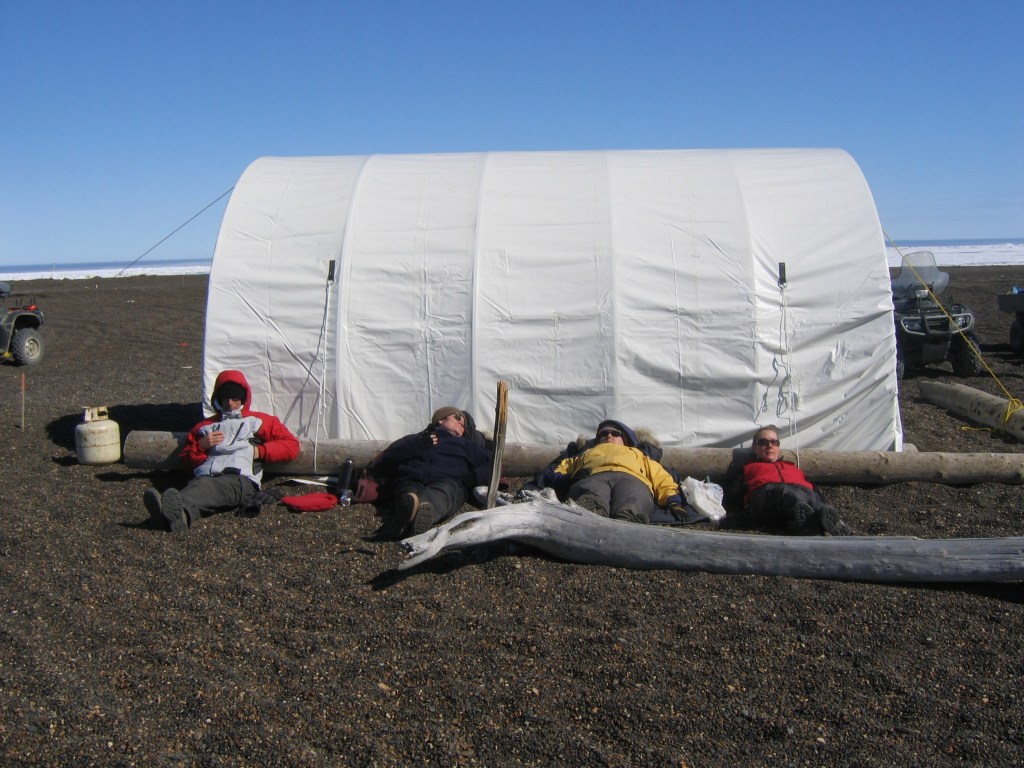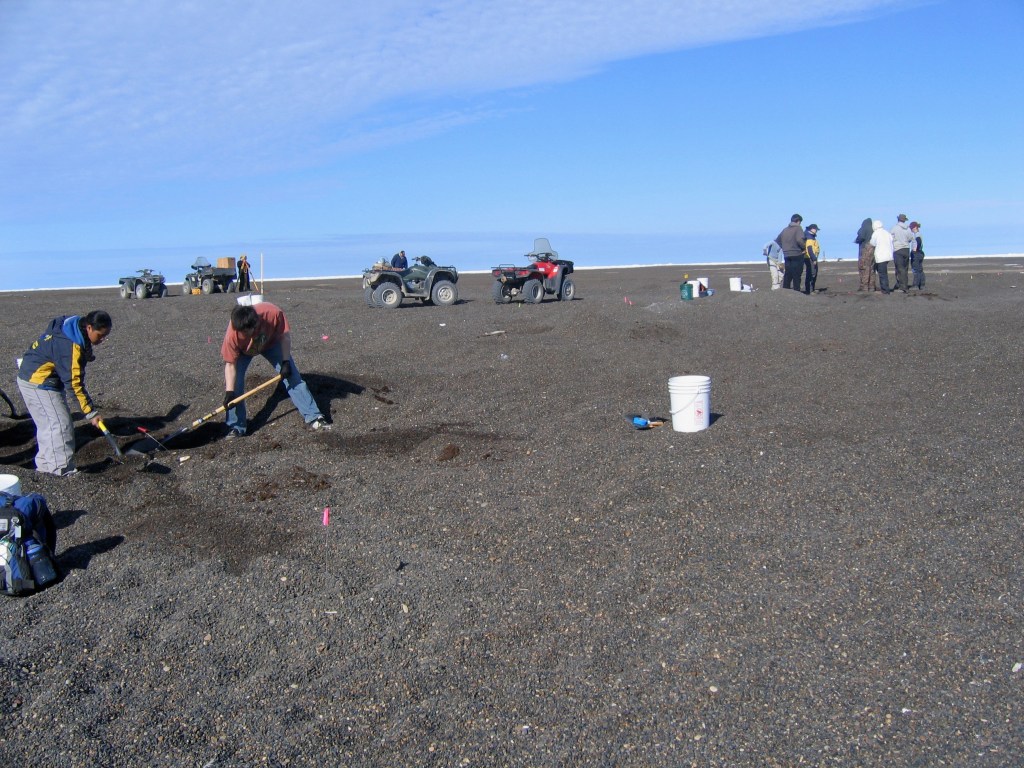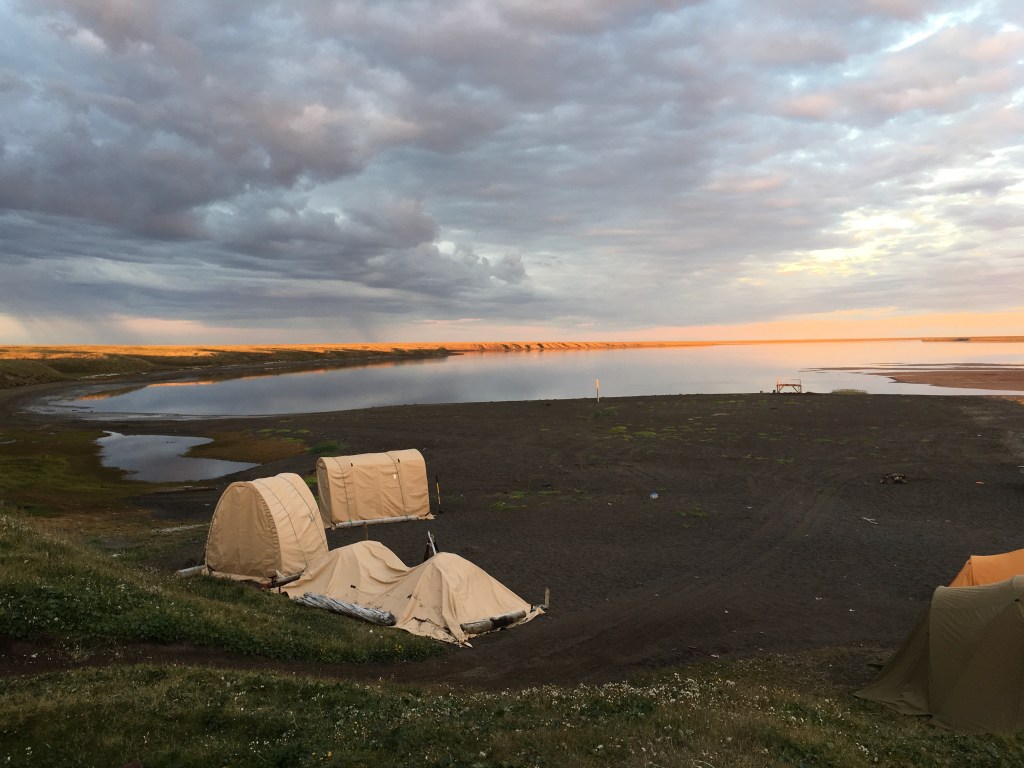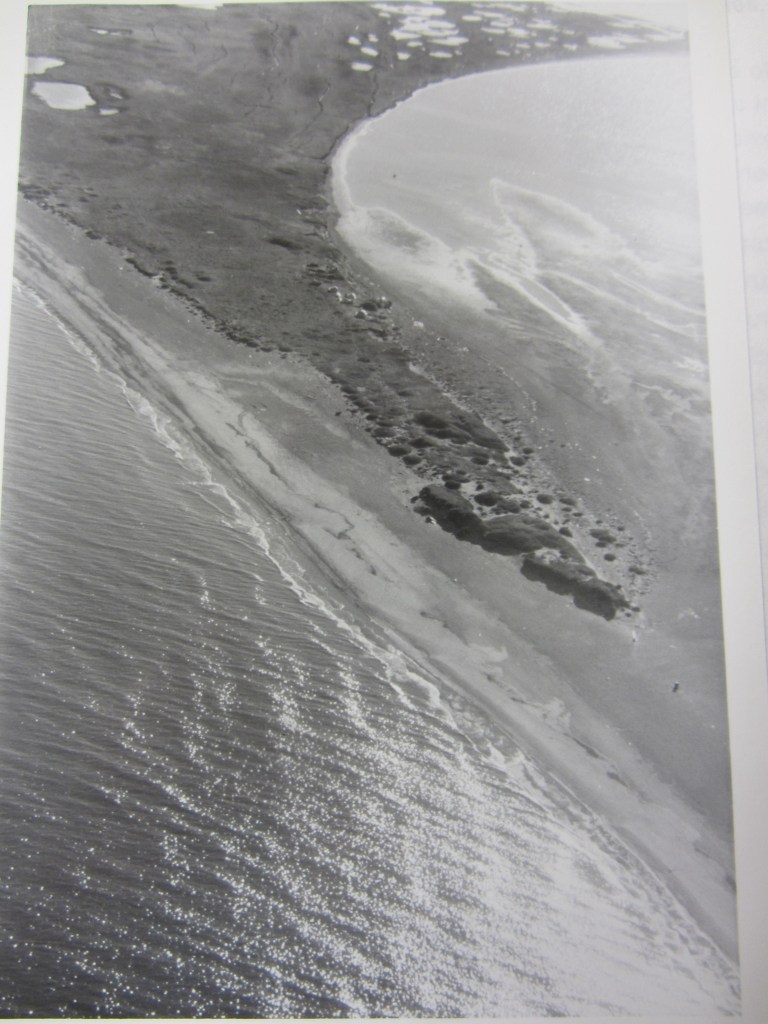Polar bears, of course. They hang out around Nuvuk a lot, which is why we always had bear guards. Some days we could see eight at once out on the ice.

Polar bears, of course. They hang out around Nuvuk a lot, which is why we always had bear guards. Some days we could see eight at once out on the ice.

During the short Arctic field season, one rests when one can.

Place is hard, since there are several sites, so I’m going with North Slope of Alaska.



Well, I’m catching up, so this should have been posted Thursday…

I am an Arctic archaeologist/anthropologist. I have lived in Utqiaġvik (formerly Barrow), Alaska since 1996. I mostly work on Arctic Alaskan coastal sites and sustainability, and spend a lot of time dealing with erosion, although I am a zooarchaeologist at heart. I chair the SAA Committee on Climate Change Strategies and Archaeological Resources.

Do you work with some aspect of people and permafrost? There is a session on that topic at ICASS X (Arkhangelsk, June 15-20, 2020). The deadline for abstracts is extended to January 20, 2020!
The session is called “People and Permafrost in a Changing Arctic.” The session abstract shown on the website is a placeholder that hasn’t been updated yet. The up-to-date version is below.
Apply here (under the Abstract Submission link) : https://icass.uni.edu
People and Permafrost in a Changing Arctic
For thousands of years, permafrost has been a constant in most of the Arctic. Communities and lifeways have literally been built on the assumption that it would endure in perpetuity. Now, in response to recent warming trends, permafrost degradation and its numerous societal and environmental impacts are becoming widespread. Coastal bluffs eroding into the sea, roads like washboards or washed away, fill collapsing around pilings supporting public infrastructure, archaeological sites and cultural heritage thawing and rotting, and ice cellars thawing and flooding, are only some of the effects becoming commonplace across the Circumpolar North.
This session will bring together interdisciplinary research focused on changing permafrost and its impacts on people and landscapes as well as human resilience and adaptation in Arctic coastal permafrost areas. We seek to develop synergy between researchers interested in these topics and expand PerCS-Net (Permafrost Coastal Systems Network), an international network of researchers dealing with permafrost systems in transition. We welcome papers covering various aspects of these issues, from identifying new types of social and environmental disruption to monitoring to attempts at adaption. Contributions from community members and holders of Indigenous knowledge and local knowledge and researchers successfully engaging directly with Indigenous communities are particularly welcomed.
Deadline is January 20, 2020.
Apply here (under the Abstract Submission link) : https://icass.uni.edu
—
About a month ago, Tracey Sinclaire and Beth Verge from Anchorage TV station KTUU came to Utqiagvik to do a number of weather/climate-related stories. One was on the effects of coastal erosion. I took them out toward Nuvuk/Point Barrow as far as seemed prudent for the vehicle I had, and got interviewed. The weather was quite challenging while they were here, but they hung in and got stories on the NOAA site, and the blue football field which is endangered by coastal erosion.
As usual, things have been busy. One of the things I’ve been busy with was an online seminar for the Society of American Archaeology on “Climate Change and Cultural Resources.” Despite some connectivity issues, it went off well. SAA records these seminars, and you can watch them if you are a current member. You will need to be logged in to the SAA web site member section to access the archive. The climate change one is here.
Black Friday wouldn’t seem like the ideal day to release a report as important as this, but there it is. This report is Part 2, covering Risks, Impacts and Adaptation in the US. It is based on a massive amount of scientific study, as detailed in Part 1, which was released last year.
For those who don’t have time to read it, the short version is that things are going to get really bad soon in many parts of the US if we don’t turn this car around. Fires, floods, coastal erosion & flooding and declining property values along the coast, climate refugees, heat waves that kill people, infrastructure collapse, agricultural failures with decreasing food security and increasing food prices, and so on. And the knock-on effects of all that will impact places and industries that maybe aren’t feeling direct effects, so the economy will shrink. Not a pretty picture.
It won’t be just Arctic peoples’ cultural heritage and valuable scientific information that gets lost. It will be public infrastructure and homes and food sources and drinking water. The problems that we are seeing here in North Alaska now will most likely be coming to a place near you soon if enough isn’t done to change things. This really isn’t the sort of thing to be gambling on.
The way it is set up, you can download executive summaries of the whole thing and of each chapter, but not the whole report or whole chapters. They have to be read online. Not much thought given to folks who live in rural communities with low bandwidth and/or super expensive internet ($299/month for 5Mb/sec and a 100GB data cap anyone). If it could be downloaded, costs and the downloaded documents could be shared.